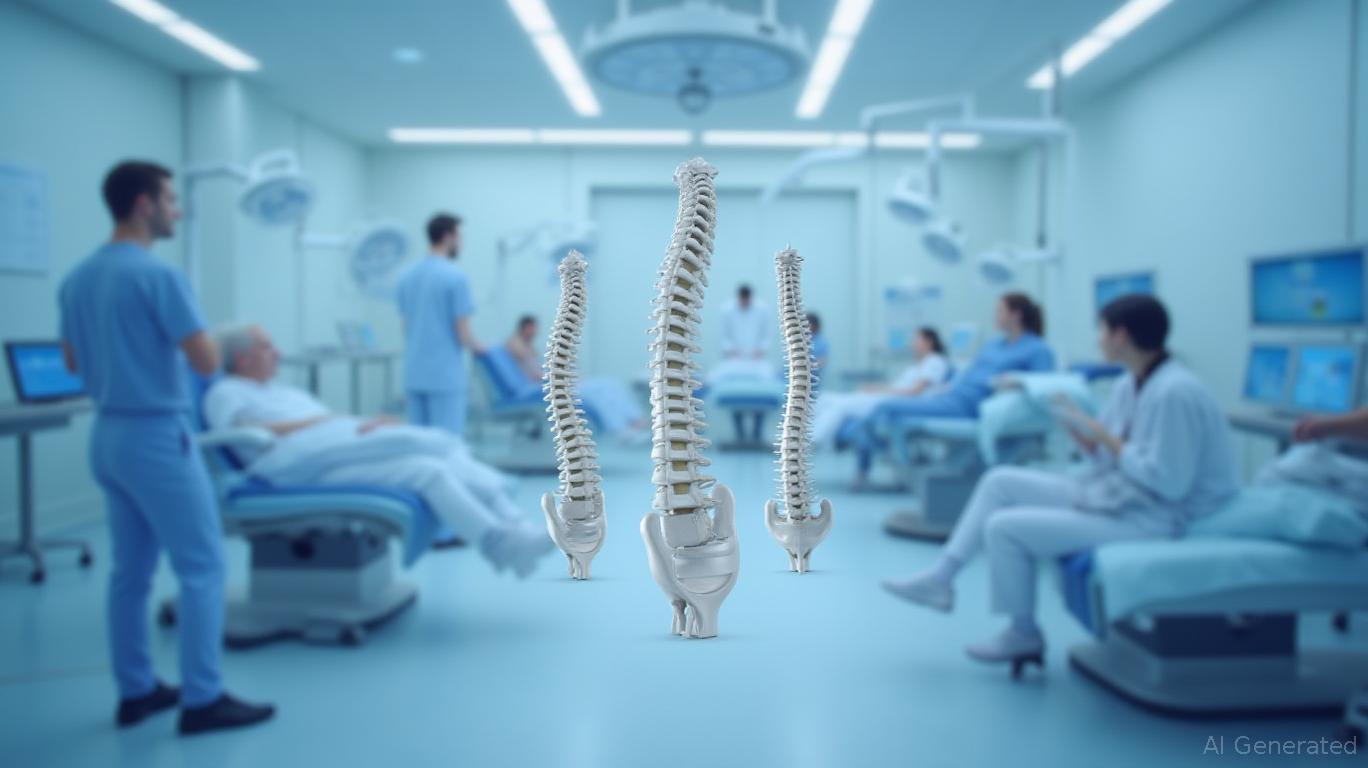Globus Medical (GMED): Navigating Near-Term Challenges to Capture Long-Term Growth
Globus Medical (GMED), a leader in musculoskeletal and neuromodulation technologies, faces short-term headwinds tied to integration challenges and macroeconomic pressures. However, its strategic acquisitions, robust financial discipline, and pipeline of innovative products position it to capitalize on long-term growth opportunities in a consolidating healthcare sector. This analysis evaluates whether the stock presents a compelling risk-reward proposition for investors.
Recent Financial Performance: Mixed Near-Term Results, Stronger Underlying Trends
Globus reported Q1 2025 worldwide net sales of $598.1 million, down 1.4% year-over-year (0.8% on a constant currency basis). The dip stemmed from delayed Enabling Technology sales (-30.4%), supply chain disruptions, and timing of international orders. U.S. sales grew modestly (+0.2% to $483.86 million), while international sales fell 7.7%, reflecting foreign exchange headwinds.
Despite these headwinds, key metrics highlight resilience:
- Non-GAAP diluted EPS rose 8.5% to $0.68, excluding merger-related expenses.
- Free cash flow hit a record $141.2 million, up from $23.8 million in Q1 2024, driven by debt repayment and working capital improvements.
- The company achieved a debt-free balance sheet after paying off $450 million in NuVasive merger debt.
The lowered 2025 non-GAAP EPS guidance ($3.00–$3.30 vs. prior $3.10–$3.40) reflects near-term integration costs, but revenue guidance ($2.80–$2.90 billion) remains intact. Management emphasized improving momentum in April 2025, suggesting stabilization is underway.
Strategic Moves: Building a Diversified Healthcare Giant
Globus is executing a clear strategy to expand its footprint beyond traditional spine surgery into adjacent markets:
1. Acquisition of Nevro Corp.: Entering Neuromodulation
In February 2025, Globus agreed to acquire Nevro, a leader in spinal cord stimulation (SCS) for chronic pain, for $250 million. This moves GMED into a high-growth segment with minimal overlap to its core spine business. Nevro's HFX SCS technology treats conditions like failed back surgery syndrome, a market projected to grow at 6–8% annually.
The transaction is accretive to earnings by year two and adds ~$100 million in annualized revenue. CEO Dan Scavilla noted, “Nevro's technologies align with our mission to provide comprehensive solutions for musculoskeletal and neurological conditions.”
2. Product Innovation: Cohere and Modulus Systems
Globus launched the Cohere anterior lumbar interbody fusion spacer—the first porous PEEK spacer for ALIF surgery—and expanded its Modulus ALIF blade system in 2025. These products address unmet needs in surgical precision and bone integration, reinforcing its leadership in spinal fusion.
3. Licensing Agreements: Enhancing Bone Preservation
A non-exclusive deal with OsteoCentric Technologies grants Globus rights to bone-preservation tapping technology, improving implant stability in spinal and orthopedic applications. This partnership underscores its focus on procedural innovation.
4. Share Repurchase Program: Confidence in Long-Term Value
In May 2025, Globus authorized a $500 million share repurchase program, signaling confidence in its intrinsic value amid a volatile healthcare sector. The move also aligns with its capital-light strategy, prioritizing returns over speculative expansion.

Near-Term Challenges: Integration and Market Volatility
Globus faces execution risks tied to:
- Supply chain disruptions: Prolonged delays in Enabling Technology sales could pressure margins.
- International market headwinds: Foreign exchange fluctuations and distributor order timing remain risks.
- Litigation costs: A $1.2 million Q1 provision highlights ongoing legal exposures, though manageable.
Why Investors Should Look Beyond the Noise
- Debt-Free Flexibility: With $784 million in cash post-debt repayment, Globus has ample liquidity to fund acquisitions and R&D without financial strain.
- High Cash Conversion: Non-GAAP free cash flow margins (~28%) are among the best in the industry, enabling reinvestment and dividends.
- Long-Term Market Tailwinds:
- Aging populations and rising musculoskeletal disorders drive demand for minimally invasive solutions.
- The $20 billion neuromodulation market is underserved, with Nevro positioning Globus as a major player.
- Share Repurchases: The $500 million buyback reduces dilution from stock-based compensation and signals confidence in undervalued shares.
Valuation and Investment Thesis
At current levels, GMED trades at ~15x 2025E non-GAAP EPS ($3.15 midpoint), below its 5-year average of 18x. This discount reflects near-term integration concerns but ignores the Nevro synergies and pipeline potential.
Bull Case: Successful Nevro integration, stabilized international sales, and product adoption could push 2026E EPS to $4.00+, valuing the stock at $60–$65 (20–25x earnings).
Bear Case: Prolonged supply chain issues or regulatory setbacks could pressure margins, though the debt-free balance sheet provides a safety net.
Investment Recommendation
Globus Medical presents a compelling “value-growth” opportunity for investors with a 1–3 year horizon. The stock's near-term volatility creates an entry point to benefit from:
- Acquisition-driven diversification into neuromodulation.
- Strong free cash flow supporting buybacks and dividends.
- Innovation leadership in spine and bone-preservation technologies.
Actionable Strategy: Accumulate shares at current levels, with a target price of $55–$60 in 12–18 months. Pair with a stop-loss below $38 (2024 lows) to manage risk.
In conclusion, Globus Medical's challenges are temporary, while its strategic moves and financial strength position it to outperform in the coming years. Investors who look past short-term noise may find a rewarding growth story unfolding.

Comments
No comments yet